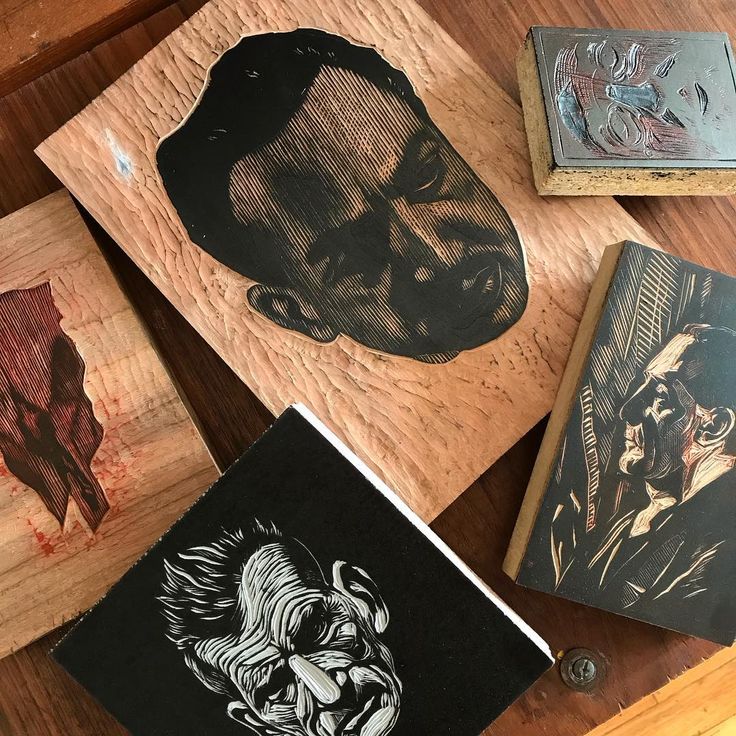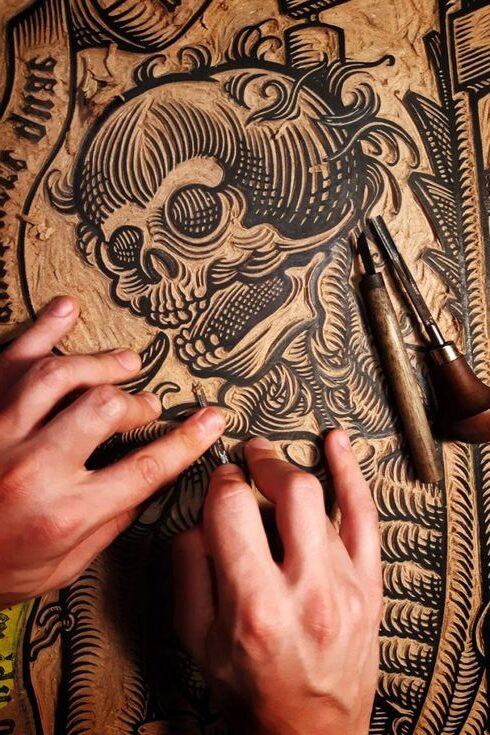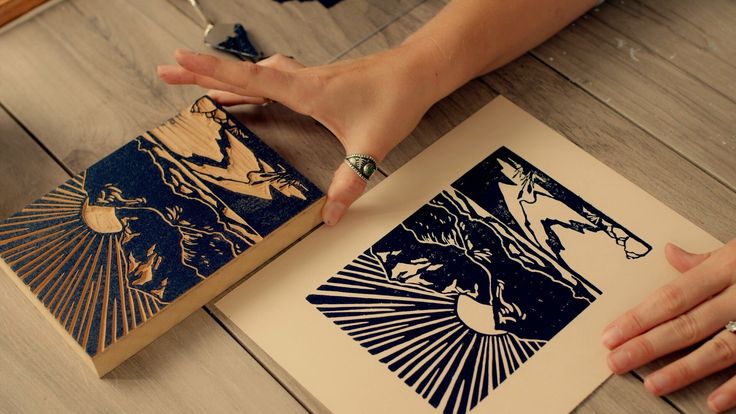
What is Woodcut Printmaking? Complete Process & Techniques
Woodcut printmaking is a form of relief printing where the image is carved into a block of wood. The areas that are not intended to be printed are cut away, leaving the raised image to be inked and pressed onto paper or another surface. It’s one of the oldest methods of printmaking, dating back to ancient China. Woodcut prints are known for their bold, graphic quality, characterized by strong lines and shapes. Artists use specialized carving tools to create intricate designs on the woodblock, and different blocks can be used for each color in a multi-color print.
History of Woodcut Printing
The history of printmaking on wood stands as a testament to humanity’s enduring creativity and ingenuity, with roots tracing back to ancient civilizations. This venerable art form, characterized by its simplicity and striking visual impact, has left an indelible mark on the annals of human history.
Originating in ancient China around the 9th century, the technique emerged as a means to reproduce texts, images, and illustrations. The Chinese utilized this technique to create intricate designs on various materials, including woodblocks, which were then inked and pressed onto silk or paper. These early woodcut prints served not only as aesthetic expressions but also as practical tools for disseminating knowledge and artistic visions.
The spread of woodcut art beyond China’s borders can be attributed to the Silk Road, facilitating cultural exchange between East and West. By the 14th century, woodcut prints had gained prominence in Europe, particularly in Germany, where they flourished during the Renaissance period. Artists like Albrecht Dürer elevated the craft to new heights, employing woodcutting techniques to produce masterful works of art that captured the imagination of generations to come.
In Japan, woodblock printing, known as “ukiyo-e,” reached its zenith during the Edo period (17th to 19th centuries). Artists such as Hokusai and Hiroshige crafted iconic prints depicting scenes of everyday life, landscapes, and mythology, influencing Western art movements like Impressionism and Post-Impressionism.
Woodcut printmaking’s enduring appeal lies in its accessibility and versatility. Its simplicity belies its potential for complexity, allowing artists to explore a wide range of styles and techniques. From bold lines and stark contrasts to delicate details and intricate patterns, woodcut prints offer a rich tapestry of artistic expression.
Beyond its artistic merits, woodcut printmaking has played a pivotal role in shaping cultural narratives and disseminating ideas throughout history. From religious texts and political propaganda to literary illustrations and decorative arts, woodcut prints have left an indelible imprint on the collective consciousness of societies worldwide. As we marvel at the beauty and craftsmanship of ancient woodcut prints, we are reminded of the enduring legacy of this time-honored art form. From its humble beginnings in ancient China to its global influence across continents and centuries, woodcut printmaking continues to inspire and captivate audiences, bridging the gap between past and present with each stroke of the carving tool.

Woodcut Printing Process
The woodcut process involves several distinct steps, from creating the design to producing the final woodcut print. Here’s an overview of the complete process:
Design
The woodcut process begins with the artist conceptualizing and creating a design for the print. This can be done through drawing, digital illustration, or any other medium that allows the artist to plan out the composition and details of the image.
Transfer
Once the design is finalized, it is transferred onto the surface of a block of wood. This can be done by tracing the design onto the wood using transfer paper or by directly drawing or carving the design onto the woodblock.
Carving
With the design transferred onto the woodblock, the artist begins carving away the negative space surrounding the image using specialized carving tools. This process requires precision and careful attention to detail to create the desired lines, textures, and shapes within the design.
Inking
Once the carving is complete, the woodblock is inked using a roller or brayer, ensuring that the ink covers the raised areas of the design while leaving the carved-away areas free of ink.
Printing
The inked woodblock is then pressed onto a sheet of paper or another surface, transferring the image onto the paper. This can be done manually using a printing press or by hand, applying pressure evenly across the surface of the block to ensure a clean transfer of the inked image.
Repeat
Depending on the desired outcome, the printing process may be repeated multiple times using the same block or additional blocks for different colors or layers. Each print may vary slightly due to differences in ink application, pressure, or paper type, resulting in unique variations within the edition.
Finishing
Once the prints have been made, they may be left to dry and then trimmed or mounted for display or sale. The artist may also choose to sign and number the prints as part of a limited edition, adding value and authenticity to each piece.

What are Woodcut Art Techniques?
The printing process encompasses a variety of woodcut techniques, each offering unique possibilities for artistic expression, some of the main techniques include:
Printing on Wood
In traditional woodcuts, the artist carves the image into a block of wood using cutting tools, leaving the raised areas to receive ink. The inked block is then pressed onto paper, transferring the image in reverse. This technique produces bold, graphic images with strong lines and contrasts.
Reduction Woodcuts
Also known as the “suicide method,” reduction process involves using a single block of wood to create a multi-color print. The artist progressively carves away more of the block between each color layer, effectively destroying the block in the process. This technique requires careful planning and precise registration but allows for complex, layered compositions.
Multi-block Woodcuts
In multi-block woodcut printing, each color in the final image is carved onto a separate block of wood. Each block is inked and printed sequentially onto the paper, layering the colors to create the final composition. This technique offers greater flexibility and control over color blending and can produce vibrant, nuanced prints.
Linocut
While not technically woodcut, linocut printing follows a similar process using linoleum instead of wood. Linoleum blocks are softer and easier to carve than wood, making them popular among artists seeking a more accessible medium. Linocuts can achieve similar effects to traditional woodcuts but with smoother surfaces and finer details.
Wood Engraving
Unlike woodcut printing, which involves cutting away the negative space, wood engraving utilizes the end grain of the wood to create finer lines and details. Artists use specialized engraving tools to incise the image onto the wood surface, resulting in crisp, highly detailed prints. Wood engravings are often used for illustrations in books and publications due to their precision and clarity.
The woodcut printing process combines artistic skill, craftsmanship, and technical proficiency to create striking and visually impactful prints that reflect the artist’s vision and creativity.
These techniques represent just a sampling of the possibilities within woodcut printing. Artists often combine and experiment with various methods to achieve their desired effects, pushing the boundaries of this ancient art form and keeping it relevant in contemporary artistic practice.